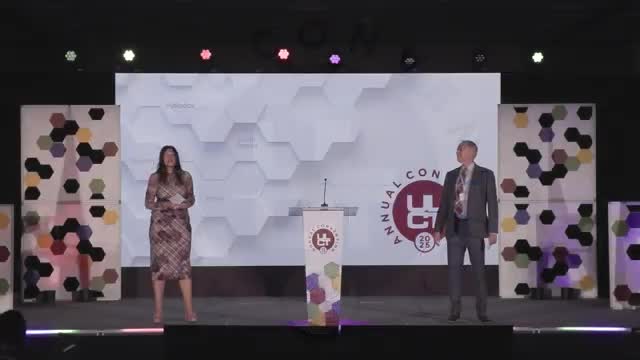Planners Day highlights Wasatch Choice, city and town centers as tools for growth and conservation
October 30, 2025 | Utah League of Cities and Towns, Utah Lobbyist / NGO, Utah Legislative Branch, Utah
This article was created by AI summarizing key points discussed. AI makes mistakes, so for full details and context, please refer to the video of the full meeting. Please report any errors so we can fix them. Report an error »

Planners Day presenters opened the session by urging city officials and planners to use the Wasatch Choice vision to shape city and town centers that accommodate growth while preserving community character.
Michelle (presenter) said the Wasatch Choice plan "preserves what we love about Utah while enhancing our quality of life," and introduced a short video that highlighted center projects from Ogden to Provo. The video described centers as "the hearts of our communities, where people can live, work, and play," and showed reuse of older commercial areas in Clearfield, entertainment and public markets in Bountiful, and mixed civic uses at Mill Creek Common.
Ted (presenter), identified himself as a former planning commissioner and city council member in North Salt Lake, and said the local focus in his city is creating a reason for people to come to a center. "We need a reason for people to come to our town center. We need the spark that brings them there," he said, adding that his city plans to redesign Hatch Park to serve as the central gathering place.
Presenters said centers offer multiple municipal benefits: by concentrating housing and coordinating with transportation choices they can increase overall housing supply, reduce congestion and conserve open space. The session also noted that, on average, housing clustered near centers uses less water — a particular concern in Utah.
Speakers acknowledged obstacles. Michelle asked attendees to note challenges on index cards, and Ted described two local issues: Highway 89 runs through his town, creating a conflict between through-traffic and a walkable center, and parking supply must be balanced with pedestrian objectives. Presenters said the Utah Department of Transportation (UDOT) is a partner in resolving corridor conflicts.
Organizers promoted technical assistance and follow-up opportunities: attendees were invited to visit exhibit tables hosted by the Wasatch Front Regional Council (WFRC) and the Mountainland Association of Governments (MAG), and were directed to breakout sessions during the day. Partners listed included the Utah League of Cities and Towns and the American Planning Association Utah chapter.
The presenters closed by asking attendees to bring their written priorities and challenges to the WFRC or MAG tables, attend breakouts to learn tools and resources (including ordinance and transportation tools), and to share local successes and problems with peers and staff. "We hope by the end of the day, you leave here with tools and resources to bring back to your communities," Michelle said.
Attendees were not recorded voting on any motions or taking formal action in this session; the meeting exchange focused on examples, resources and discussion of implementation challenges.
Michelle (presenter) said the Wasatch Choice plan "preserves what we love about Utah while enhancing our quality of life," and introduced a short video that highlighted center projects from Ogden to Provo. The video described centers as "the hearts of our communities, where people can live, work, and play," and showed reuse of older commercial areas in Clearfield, entertainment and public markets in Bountiful, and mixed civic uses at Mill Creek Common.
Ted (presenter), identified himself as a former planning commissioner and city council member in North Salt Lake, and said the local focus in his city is creating a reason for people to come to a center. "We need a reason for people to come to our town center. We need the spark that brings them there," he said, adding that his city plans to redesign Hatch Park to serve as the central gathering place.
Presenters said centers offer multiple municipal benefits: by concentrating housing and coordinating with transportation choices they can increase overall housing supply, reduce congestion and conserve open space. The session also noted that, on average, housing clustered near centers uses less water — a particular concern in Utah.
Speakers acknowledged obstacles. Michelle asked attendees to note challenges on index cards, and Ted described two local issues: Highway 89 runs through his town, creating a conflict between through-traffic and a walkable center, and parking supply must be balanced with pedestrian objectives. Presenters said the Utah Department of Transportation (UDOT) is a partner in resolving corridor conflicts.
Organizers promoted technical assistance and follow-up opportunities: attendees were invited to visit exhibit tables hosted by the Wasatch Front Regional Council (WFRC) and the Mountainland Association of Governments (MAG), and were directed to breakout sessions during the day. Partners listed included the Utah League of Cities and Towns and the American Planning Association Utah chapter.
The presenters closed by asking attendees to bring their written priorities and challenges to the WFRC or MAG tables, attend breakouts to learn tools and resources (including ordinance and transportation tools), and to share local successes and problems with peers and staff. "We hope by the end of the day, you leave here with tools and resources to bring back to your communities," Michelle said.
Attendees were not recorded voting on any motions or taking formal action in this session; the meeting exchange focused on examples, resources and discussion of implementation challenges.
Don't Miss a Word: See the Full Meeting!
Go beyond summaries. Unlock every video, transcript, and key insight with a Founder Membership.
✓
Get instant access to full meeting videos
✓
Search and clip any phrase from complete transcripts
✓
Receive AI-powered summaries & custom alerts
✓
Enjoy lifetime, unrestricted access to government data
30-day money-back guarantee


